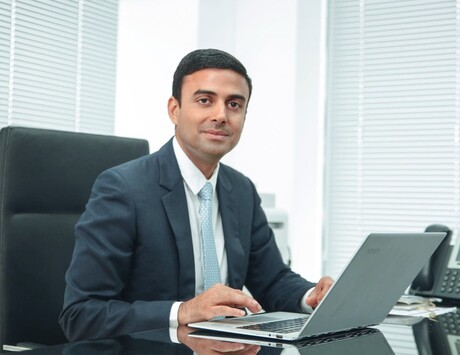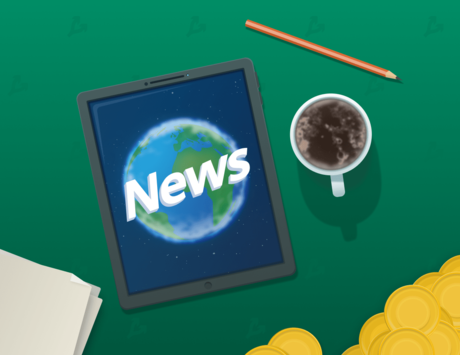The London-based publication, its printing presses stopped, looks to make a splash online Stateside.
LONDON — For three decades, the Independent was a plucky underdog battling Fleet Street’s powerful press barons. Now it’s trying to carve out a space in an even more competitive market: New York.
The British publisher’s decision to shut down its ailing print edition in March was a pivotal moment in the history of the newspaper industry. Rivals around the world are watching closely to see if the Independent can prove there’s a sustainable commercial future for general interest newspapers when the printing presses stop rolling.
Phase one in its transformation into a global online-only publisher: seize a foothold in the world’s most crowded news market.The Independent is planning significant investments in its U.S. operation to build on an American audience that currently stands at about 18 million unique users a month, according to the web measurement firm comScore, and to grab a slice of the growing amount U.S. companies spend on digital advertising.
In the coming months, the Independent’s newsroom of 8 journalists near Manhattan’s Union Square will be boosted by the arrival of a news editor and several new specialist reporters in areas such as finance, technology, culture and science. The Independent’s head of audience development has been sent over from London to help kickstart the expansion.
It is competing for eyeballs and ad revenues with a vast range of competitors who are better-staffed and better-funded.
“It’s going very well indeed,” the Independent’s London-based editor Christian Broughton told POLITICO after returning from a visit to the growing Manhattan office.
Broughton had just received the first traffic figures since the print edition closed, showing the Independent’s international online audience increased 31 percent year-on-year in April to 63 million unique users a month, according to the U.K.’s Audit Bureau of Circulations — an encouraging start to life after print.
Despite that healthy growth, there aren’t many on either side of the Atlantic who share his optimism about the Independent’s prospects.
For one thing, the Independent is pursuing a business model based on generating digital advertising revenues by maximizing the traffic to each article, at a time when the viability of that model is under question because of the growing power of Facebook, the shift to reading on mobile devices (from which advertising yields for publishers tend to be lower), and prevalence of ad-blocking.
It is competing for eyeballs and ad revenues with a vast range of competitors — including BuzzFeed, Vox, the New York Times, the Guardian, Mashable, Business Insider and Mail Online which are better-staffed and better-funded. The last thing American advertisers are thinking right now is “we need another publisher,” said Ben Winkler, chief digital officer of the media agency OMD.
There are doubts, too, about whether the Independent’s digital editions match the high journalistic standards that distinguished the print product at its peak. Some observers, including several former journalists at the publication who spoke to POLITICO, worry that the editorial quality has been sacrificed in search of clicks. (Sample headline: “The man with a bionic penis has just had another operation to make it smaller.”)
“Mail Online for left-wing students,” is how one former staff member described the website.
Broughton brushed aside those doubts with the confidence of an editor who’s been freed from the yoke of a declining legacy business and given a mandate by his millionaire proprietor to expand rapidly.
Evgeny Lebedev, the Russian socialite whose family bought the Independent in 2010, gave Broughton the green light after raising £25 million from the sale of the i — a low-price cousin to the print Independent — to a rival publisher in March. Armed with that “booster rocket,” Broughton has nearly doubled the editorial staff on the website to about 90 since the print edition closed.
The roughly 40 journalists who moved across from the print title include Robert Fisk and Patrick Cockburn, whose dispatches on the Middle East have a big following, and the newspaper’s senior U.S. correspondent, David Usborne, who “does good work,” according to Gawker media boss and fellow Brit Nick Denton.
With that first round of hiring done, Broughton is looking to recruit journalists in Asia, the Middle East, Europe and North America. The Independent decided to target America first after noticing a growing number of readers there who returned to the site regularly.
The Independent, with its 18 million monthly unique visitors a month in the U.S., has some way to go there before it reaches the web audience of its British-owned competitors the Guardian (35.9 million unique U.S. users a month in April, according to comScore) or Mail Online (49 million), let alone the major American brands like BuzzFeed (80.3 million), the Huffington Post (76.5 million) or the New York Times (73.3 million).
Yet Broughton thinks there’s potential to grow the audience. As he sees it, there’s a gap in the U.S. market for the sort of journalism that the Independent was known for at its peak: first-rate foreign coverage, politically moderate commentary, strong reporting on the environment and science. “The values of the Independent travel well,” he said. “Being a reliable, independent voice means something.”
Although the Independent was the first Fleet Street title to go online-only, it was late to the Internet.
There’s even space for the Independent in covering American politics in the year of the U.S. presidential election, he believes, despite blanket coverage by myriad other, better-resourced publications with armies of reporters on the ground. “Anyone who can be trusted, independent, internationalist, and offer something of quality — our experience shows us that kind of journalism picks up an audience, and a valuable one,” Broughton said.
The little paper that could
The Independent is accustomed to competing against long odds.
Founded by a trio of former Daily Telegraph journalists in 1986, when Margaret Thatcher was in power, the newspaper had a circulation of more than 400,000 at its peak but struggled to maintain its readership amid intense competition from the likes of Rupert Murdoch. For much of its 30-year existence, it appeared close to financial ruin; speculation about its demise was constant.
After buying the paper for £1 in 2010, the Lebedevs sank more than £50 million into keeping it afloat. In five years, they reduced the Independent’s day-to-day losses from £22 million to just under £6 million, but sales of the print edition kept falling. By the time they decided to close the print edition, it was selling 32,000 copies a day at full price. Evgeny Lebedev came to believe that the print edition could finally be jettisoned — that the “future is digital,” as he put it in an interview with the Guardian in February — after seeing rapid growth on the website.
Although the Independent was the first Fleet Street title to go online-only, it was late to the Internet. While the likes of the Guardian and Daily Telegraph built vast international audiences over the last 15 years, the Independent had only a spartan web presence for much of that time. Once it began playing catch-up a few years ago, though, the online audience mushroomed: from 17 million unique users a month to about 70 million in the space of three years, making it “the fastest-growing quality newspaper site” in the U.K., as Broughton describes it.
In various public statements, Lebedev, Broughton and other executives have insisted the Independent will be commercially viable as an online-only publication. It’s hard to properly assess that claim. A spokeswoman said the digital operation is profitable and that revenues last year grew by 50 percent, but did not give specifics. The last publicly available financial accounts, for the 2014 financial year, did not include a statement of revenues, which under U.K. accounting rules implies that turnover was less than £6.5 million.
“We write long, we do in-depth coverage, we do proper news. We have some fun on the way, for sure” — Christian Broughton
In London media circles, there’s skepticism about the Independent’s prospects.
Assessing the Independent’s website in a report in February, media research firm Enders Analysis said: “We do not believe the publisher has invested in its digital operation as some others have: the site is slow as a result of too much content, too much advertising and too much tracking; it is not as elegantly designed as the best online services we have seen. There has been too much focus on generating reach to drive digital advertising spend at all costs.”
Private Eye, the fortnightly satirical magazine, regularly mocks the Independent’s online output in its “Street of Shame” column, accusing it of a “clickbait-heavy diet of repurposed Reddit threads and YouTube videos” and a “sod-the-quality-look-at-the-numbers” approach. “I don’t hold out enormous hope for its future, to be honest,” said Adam MacQueen, a Street of Shame contributor.
Among former Independent staff there are also doubts, especially among print veterans.
Of the articles that seemed to play well with the online audience, “not one was from a reporter leaving the office to speak to someone,” one complained. “It cannot sustain the level of journalism the paper used to do. There is no point pretending.”
John Rentoul, a veteran political columnist — and one of those who stayed after the transition — defended the digital edition. “I know some Indy journalists worry about clickbait-driven journalism dominating the Indy brand, and that they will be dominated by the different culture of the website, but I disagree with them.”
“The website was far bigger than the print edition by the end and it is successful, trusted and profitable.”
“I think the Independent has its own identity, sophisticated in foreign affairs and excellent on stories with edge others don’t see” — Tina Brown
Broughton brushed off questions about quality.
“I think the quality on the website is phenomenally strong. We’ve got no intention of watering it down. We write long, we do in-depth coverage, we do proper news. We have some fun on the way, for sure.”
The toughest battle of all
Cracking the competitive American market will be incredibly tough, regardless of how good the Independent’s journalism is.
In New York, there’s both doubt and curiosity about the Independent’s ambitions.
“I don’t envy the publisher who’s trying to break into the digital media space [here],” said OMD’s Winkler. “To be considered [by advertisers], a new player needs scale or buzz, preferably both. And even then it can be hard.”
Tina Brown, the British former Vanity Fair, New Yorker and Newsweek editor, a prominent figure in Manhattan media, said she thinks the Independent could catch on with Americans if it sinks resources into the market.
“I think the Independent has its own identity, sophisticated in foreign affairs and excellent on stories with edge others don’t see,” she said. “It was brilliant visually too, and perhaps they should bring some of that visual flair to the digital site as a differential from the Guardian.”
Martin Dunn, a Fleet Street veteran and former editor of the New York Daily News, said: “The Guardian and the Mail Online have carved out a niche in America with their commitment to American coverage and their ability to offer interesting perspectives.”
“It does not seem as though the Independent offers anything that is truly different,” Dunn said. “Perhaps if they find some commentators who have a unique point of view they may become relevant in the States. But they are going to find it a very tough proposition to make themselves heard in a country where media companies have already staked out a strong digital position. What is it that they are going to offer than no one else already offers?”
Broughton said he’s taking it carefully, and won’t rack up the sort of unsustainable editorial costs that are crippling the Guardian.
“We believe in taking such steps in a careful, considered way, constantly evolving rather than rushing towards big bang moments. Test a theory, scale up, listen to the audience, re-evaluate, grow again. Editorial and commercial working in tandem. It’s worked well for us so far.”



